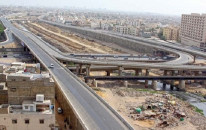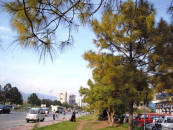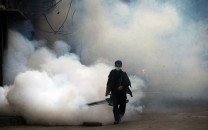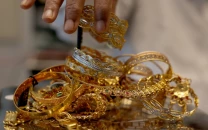Heady days: Cement industry enjoying boom for three years
Performance improves on the back of lower coal rates, high cement prices .

Profits of most cement companies are expected to remain intact in the current financial year. DESIGN: JAHANZAIB HAQUE
The cement industry of Pakistan has seen heady days over the last three years, becoming one of the best performing sectors on the Karachi Stock Exchange (KSE) – the country’s biggest bourse that gave handsome returns of 52% in the last financial year.
The industry put in strong performance after both internal and external factors turned positive, leading to an increase in margins of most of the cement companies running in the country.
Among global factors, a continuous decline in prices of imported coal – the main ingredient and a source of fuel in cement manufacturing constituting 50-60% of the production cost – has given a boost to cement companies and slashed cost for all players – small and big, most efficient and least efficient.

International coal prices have plunged to $75 per ton from $145 per ton in June 2010, down 48%. In the first 10 months of the current calendar year alone, coal prices have come down a significant 18% to $75 per ton because of weak global demand.
The demand fell in the wake of economic slowdown in emerging economies, especially China and India, both of which are huge coal importers, which dented world appetite for coal. Now importers, especially emerging economies, are purchasing coal on their terms, keeping prices low compared to 2010 and 2011 when better demand kept prices at higher levels.
Since almost all cement companies in Pakistan import coal to meet energy needs, their cost of production has gone down considerably. Moreover, lower coal prices also pushed higher earnings of these companies across the board in fiscal year 2012-13.

Mid-tier cement companies made the most of the price crash since they were relatively less energy-efficient, JS Global, a research and brokerage house, said in a recent report.
These companies announced strongest earnings in 2012-13. Maple Leaf, Pioneer Cement and Fecto Cement, which are at the bottom among energy-efficient companies, reported extraordinary year-on-year earnings growth of 550%, 155% and 68% respectively.
Rise in cement prices
Apart from the favourable international scenario, the industry also got some support from the domestic market. This led to a gradual decline in the cost of production and it came at a time when the industry was regaining its lost ground in terms of prices.
Cement prices, which had touched a high of Rs400 per 50kg bag in September 2008, dropped to as low as Rs250 per bag in September 2009. Later in March 2011, prices reached the psychological mark of Rs400 per bag following a gap of two and a half years, which saw cement manufacturers lock in a price war that hit their profits.

Today, cement companies are selling their products in the range of Rs470 to Rs500 per bag, up 79% in three years compared to Rs280 to Rs300 in June 2010 – one of the primary reasons for the gradual but sharp rise in cement industry’s profits in the period.
Performance on KSE
Cement was the second best performing sector on the Karachi Stock Exchange with astoundingly high returns of 74% in financial year 2012-13, just behind textiles, which gave 81% returns.
This performance is way better than the 52% average returns given by the benchmark KSE 100-share index during the year.
Among leading cement stocks that gave handsome returns were Lucky Cement – the largest and one of the most efficient cement manufacturers in Pakistan with over 18% market share – which grew 80.87% in 2012-13. Similarly, the stock price of DG Khan Cement, another leading company, recorded a sharp increase of 111%.
Lucky Cement Chief Executive Muhammad Ali Tabba, while talking to The Express Tribune recently, said profits of most of the cement companies were expected to remain intact in the current financial year because of strong fundamentals on which the industry stood today. He expected the industry to repeat the growth story this year as well as it did a year earlier.
Published in The Express Tribune, October 28th, 2013.
Like Business on Facebook, follow @TribuneBiz on Twitter to stay informed and join in the conversation.



















COMMENTS
Comments are moderated and generally will be posted if they are on-topic and not abusive.
For more information, please see our Comments FAQ